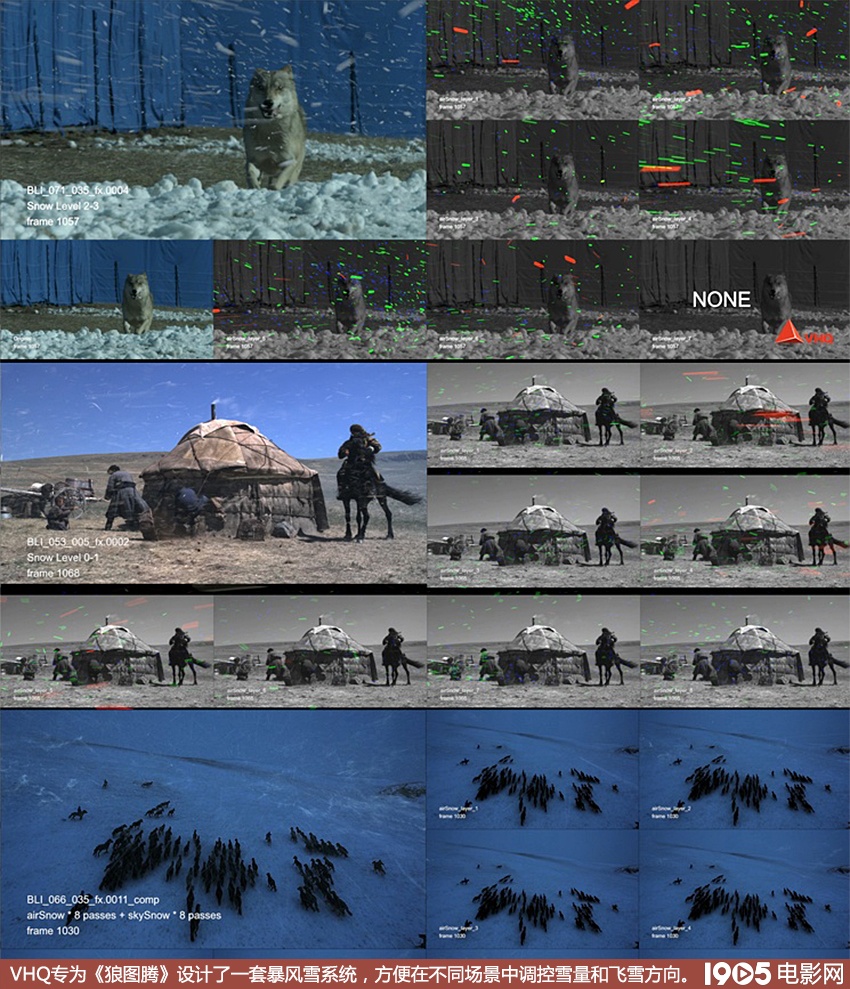Breaking away from "fifty cents special effects" (II): A small survey on the survival of special effects artists

1905 movie network exclusive feature A little different from previous years, in 2015, a lot of "Machamp’s chaotic gods" emerged in the mainland film market, from the devil’s world in Zhong Kui to the radish essence in monster hunt, from the sinking of the ice sea in Taiping Wheel to the Kunlun avalanche in the Nine-story Demon Tower, from the alien ball in Unbelievable to the dragon-seeking tactic. … The endless emergence of special effects blockbusters fully shows the increasingly abundant imagination and emboldened technological progress of Chinese films.
It may surprise you that 49 of the 50 best box office movies in history are told by special effects characters. While people are enjoying the visual bombing with relish while drinking cola and chewing popcorn, have they ever thought about what kind of people are the special effects artists who created these screen wonders that are fake and cool? Is an artist who is unrestrained? Or is it a bitter science and engineering house? What is their income? How are they doing?
With this problem, 1905 Film Network made a special trip to interview several special effects artists from internationally renowned visual effects companies Pixomondo and VHQ, as well as other "veterans" who once struggled in the front line, to reveal the unknown ups and downs of special effects artists behind their glamorous works … …

Self-cultivation of special effects artists: artists? Engineer? Or a craftsman?
As the "behind-the-scenes hero" of the film industry, the jobs of makeup, fine arts, photography, editing, music and sound effects have a long history, and ordinary audiences probably know what these jobs are for even if they have never made a film. The special effects artist is newly born in the wave of film digitalization in the past two or three decades, and his professional characteristics of emphasizing the combination of art and technology are very mysterious and avant-garde. Ordinary movie fans may have heard more or less about green screen synthesis, CG characters, digital landscape painting and motion capture, and even know a little about their production process. However, what kind of people are special effects artists, but they may not understand them.
In the interview, we found that this seemingly tall industry actually has a low entry threshold. Compared with music and art, which need years of "children’s work" accumulation, the practitioners in the special effects industry may come from any major: some art school students who have learned to paint since childhood "push the boat with the current", and some science and technology houses "become monks halfway" because of their obsession and love; The educational level of the practitioners is also uneven: there are regular troops majoring in digital art from famous schools, and there are also masters of "returnees" who are striving for perfection. Of course, in China, most practitioners actually come from various short-term and medium-term training courses in the society.
However, if you think that the special effects artist is a "simple" job, you are all wet — — Although most low-level special effects artists are really doing a lot of seemingly boring mechanical work, in fact, it is almost endless to deepen this work — — Especially for special effects artists who are exposed to three-dimensional special effects, when encountering projects with special needs, the existing plug-ins often cannot meet the needs. At this time, special effects artists need to "tailor" and develop new tools for specific projects.
For example, in the 10-minute fighting between wolves and horses on a snowy night in Wolf Totem, VHQ, which is in charge of the special effects part, not only created a realistic series of CG wolves and CG horses, but also made a special snowstorm system. Guo Yiran, who is in charge of this "heavy project", recalled: "The snow we usually see usually floats down, but the amount of snow on the Inner Mongolia prairie is very large, and the wind is particularly strong, like white wool snow is intermittent, and some snow on the ground is blown up again." In order to easily adjust the direction, amount and shape of the snowstorm in the picture, the special effects department just spent a month to create this blizzard system, and then put it in each shot after completion, and then adjust it according to different scenes.
It can be seen that special effects artists not only need good artistic intuition, but also have high requirements for technology and tools, and the latter often plays a more critical role in the process operation of large-scale projects. Although in the eyes of many ignorant and whimsical directors and producers, special effects artists are just technicians and engineers at best; Although in the industry, special effects companies often declare that their employees are "artists", Li Da, a special effects artist from Pixomondo, put forward a more accurate term for his career orientation — — "Art engineer".